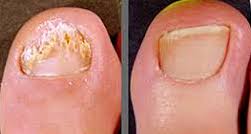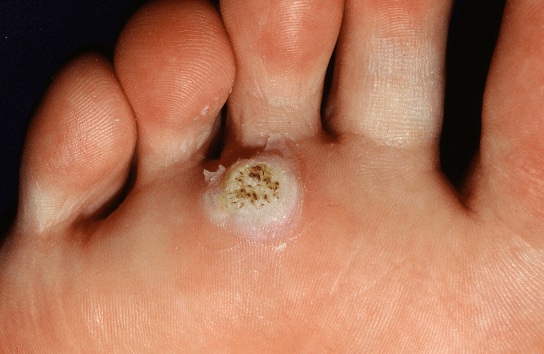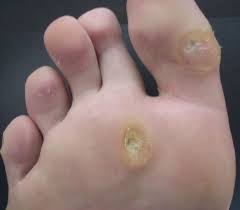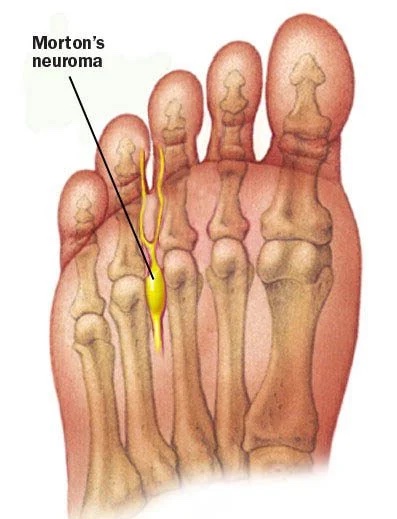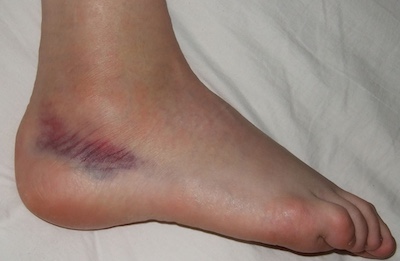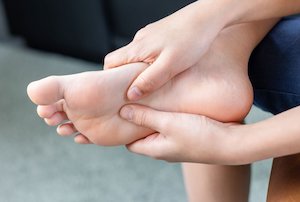
Laser Therapy for Foot Problems
"Perfected by Podiatrists"
What is Laser Therapy?
Adler Podiatry Clinic uses a Class IV therapeutic laser system. It stimulates and accelerates the healing process, reducing inflammation and pain, and triggers cell regeneration.
Laser Therapy for Foot and Ankle Pain
With 26 bones in the foot alone, as well as major ligaments, tendons, joints, and nerves – it’s not surprising that millions of Americans suffer various types of foot and ankle pain.
Class IV laser therapy is used for the relief of pain, to accelerate healing and decrease inflammation.
When the light source is placed against the skin, photons penetrate several centimeters down and are absorbed by the mitochondria (the energy producing part of a cell). This energy results in the restoration of normal cell function.
The main goal of laser therapy is to stimulate the cell to perform its natural functions, but at an enhanced rate.
Laser therapy is a quick and easy treatment allowing patients to relax during the procedure. In contrast to “cold lasers,” which provide no feeling or sensation, high power diode laser therapy provides a warm, soothing feeling.
Common sources of foot pain include: Peripheral Neuropathy Plantar fasciitis – Heel Bursitis Achilles, Posterior Tibial and Peroneal Tendonitis Ankle sprains Neuroma (pinched nerve) Arthritis and inflammation Bunions Hallux limitus (stiff big toe joint) Laser Therapy for Toenail Fungus The laser when used in the treatment of fungal toenails dramatically improves the success rate. The laser penetrates the toenail destroying the genetic material responsible for fungal growth. Patients are comfortable and relaxed during their treatment session. Topical antifungal medication is often used on a daily basis in combination with the laser therapy. Most patients require 2 to 3 laser sessions approximately 3 months apart. Laser Treatment for Warts - Verruca Plantaris A wart or veruca plantaris is caused by a virus which grows in the upper layer of skin. Like other viruses warts can be contagious. Warts are moe common in children than adults and can be difficult to treat. When occurring on the bottom of the foot, if under a pressure point such as the heel or metatarsal, the wart can be painful. The classic appearance of a plantar wart is a callous with pinpoint capillarv hemorrhages, black dots which bleed when shaved. The laser triggers the body's immune system which attacks the virus. Treating warts with the laser is painless and effective. Laser Treatment of Porokeratosis Porokeratosis is a painful callous on the bottom of the foot. The primary characteistic is a well defined callous a pressure point under the ball of the foot or heel. Laser treatment is performed without anesthesia and is painless. Laser Therapy for Pain Relief Laser Treatment of Heel Pain The video discusses causes and treatments for Fasciitis. The problem affects almost 15% of the population. “Spurs” are not the only cause of heel pain. Problems which have similar symptoms include: Plantar Fasciitis, Posterior Tibial Dysfunction, Achilles Tendinopathy, Bursitis, Nerve Entrapments and Stress Fractures. Laser Therapy helps in the treatment of fasciitis and tendonitis by promoting a natural healing process. Avoid cortisone shots, reduce the need for physical therapy and return a normal life style faster. Laser Treatment of Morton's Neuroma Morton's neuroma is a thickening of the digital nerve in the ball of the foot. The nerve is irritated by the bones (metatarsals) behind the toes. Tight shoes pinch the nerve causing pain. Removing the shoe and massaging the foot helps relieve the pain. As the nerve enlarges the frequency and severity of pain increase. Treatment of Morton's Neuroma using a laser can be very effective in reducing the inflammation surrounding the nerve. The laser penetrates deep into the tissues to reduce swelling and stimulate regeneration at the cellular level. Laser Therapy for Sprains and Strains Strains occur when ligaments and tendons are suddenly stretched causing a small amount of bleeding under the skin. The initial pain gradually subsides, but returns as the ankle gradually swells. Sprains involve a partial or total tear of a ligament. Sprains commonly occur during physical activity, but can occur going down stairs or curbs. Ligaments on the outside of the ankle are commonly involved. Unlike strains, because a ligament in the joint is partially or totally torn, movement increases injury to the joint and delays healing. Treatment of a sprain often involves immobilization in a cast to prevent additional injury to the joint. This allows the ligaments to heal faster. Laser therapy reduces pain and swelling and promotes healing of the ligaments. Laser Therapy for Chronic Pain Chronic Pain can be effectively treated with laser therapy. This non-invasive technique helps reduce pain and inflammation. The use of laser is a safe alternative to pharmaceutical drugs and is FDA approved. Medical Laser Therapy works by bathing the inflamed tissue with photon energy allowing the energized cells within the injured tissue to begin healing. The laser starts a process of modulated cellular activity which over the next day leads to decreased pain and inflammation. Laser therapy allows your body to utilize its own restorative powers to heal. Treatment is provided in the office, takes between 3-15 minutes, depending on the condition being treated and is painless. Most patients experience positive results after 5-8 treatments.
© 2012 - 2025